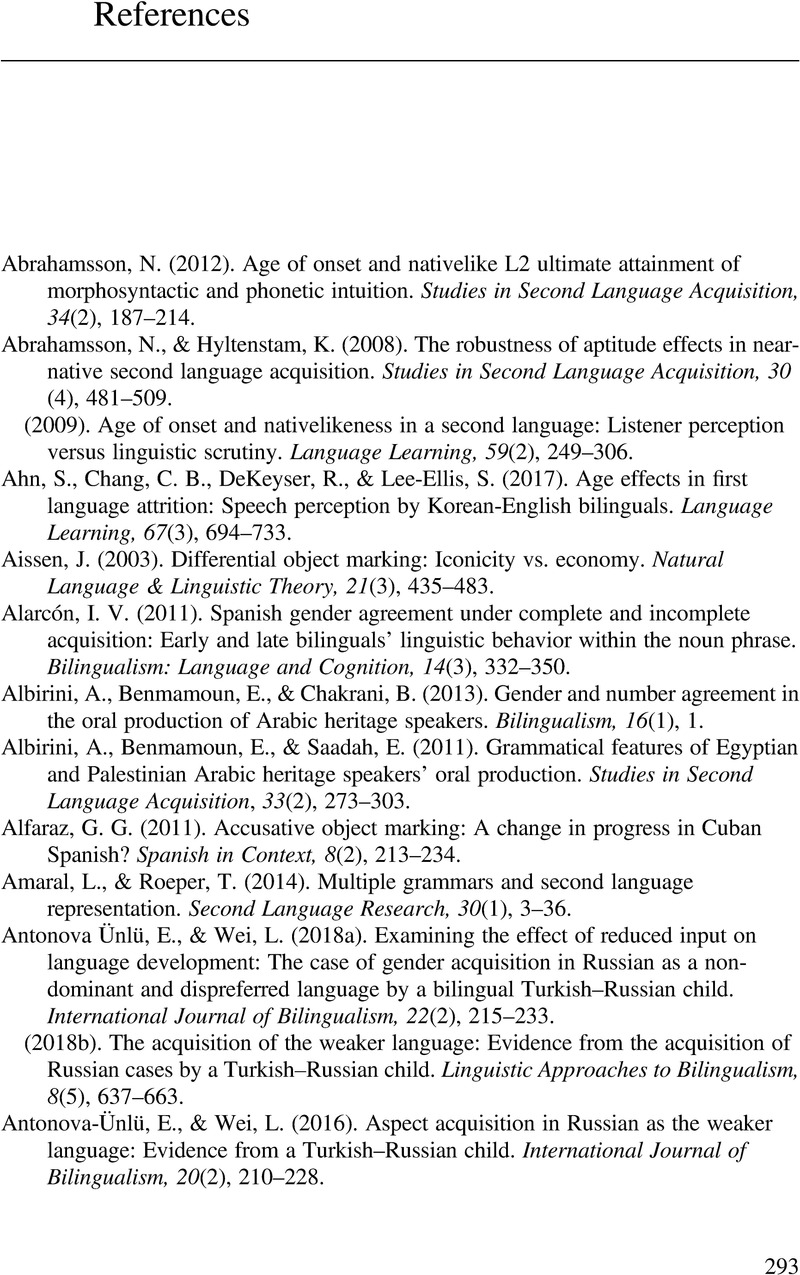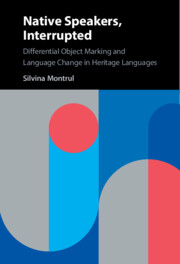Book contents
- Native Speakers, Interrupted
- Native Speakers, Interrupted
- Copyright page
- Dedication
- Contents
- Figures
- Tables
- Preface
- Abbreviations
- Introduction
- 1 On Heritage Speakers as Native Speakers
- 2 Structural Changes in Heritage Language Grammars
- 3 Differential Object Marking
- 4 Language Change and the Acquisition of Differential Object Marking
- 5 The Vulnerability of Differential Object Marking in Three Heritage Languages
- 6 Differential Object Marking in Spanish as a Heritage Language
- 7 Differential Object Marking in Hindi as a Heritage Language
- 8 Differential Object Marking and Clitic Doubling in Romanian as a Heritage Language
- 9 Comparing the Three Heritage Languages
- 10 Intergenerational Transmission
- Implications
- References
- Index
- References
References
Published online by Cambridge University Press: 15 December 2022
- Native Speakers, Interrupted
- Native Speakers, Interrupted
- Copyright page
- Dedication
- Contents
- Figures
- Tables
- Preface
- Abbreviations
- Introduction
- 1 On Heritage Speakers as Native Speakers
- 2 Structural Changes in Heritage Language Grammars
- 3 Differential Object Marking
- 4 Language Change and the Acquisition of Differential Object Marking
- 5 The Vulnerability of Differential Object Marking in Three Heritage Languages
- 6 Differential Object Marking in Spanish as a Heritage Language
- 7 Differential Object Marking in Hindi as a Heritage Language
- 8 Differential Object Marking and Clitic Doubling in Romanian as a Heritage Language
- 9 Comparing the Three Heritage Languages
- 10 Intergenerational Transmission
- Implications
- References
- Index
- References
Summary

- Type
- Chapter
- Information
- Native Speakers, InterruptedDifferential Object Marking and Language Change in Heritage Languages, pp. 293 - 321Publisher: Cambridge University PressPrint publication year: 2022



